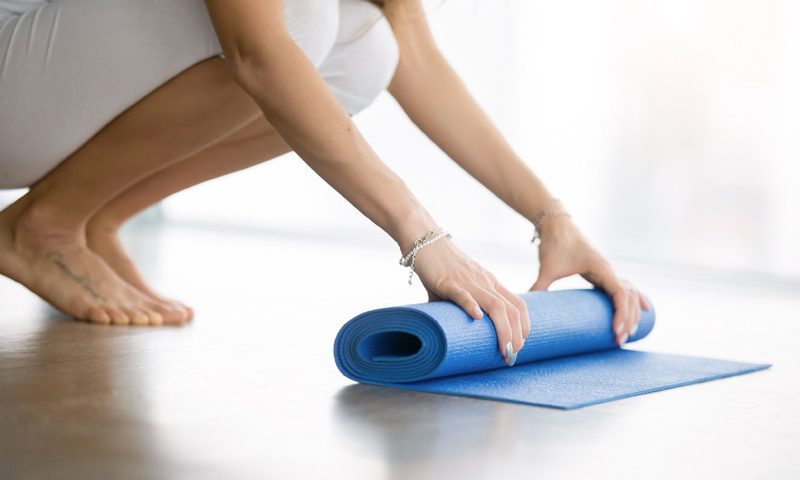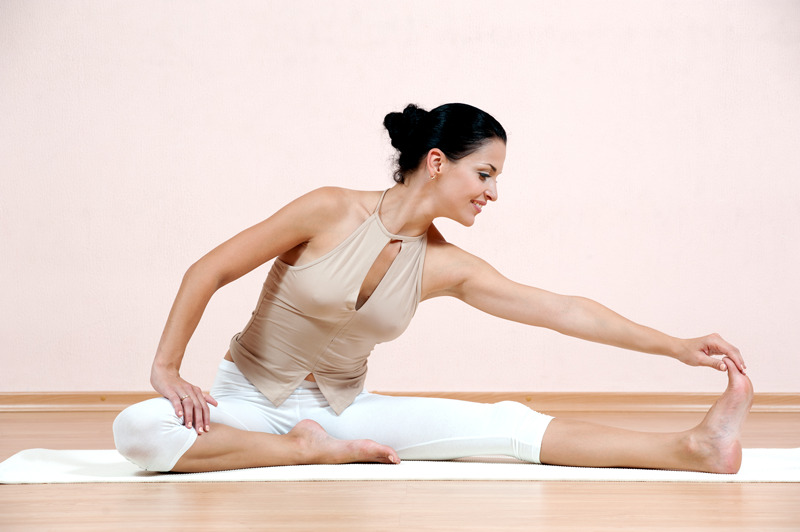
Your Evening Yoga Routine
November 1, 2018
What is Sankalpa?
November 15, 2018What is Yoga Etiquette?

If you’re new to yoga, attending your first class can be nerve-racking. Surrounded by experienced yogis, you may feel overwhelmed by the unwritten rules on how to act. Thankfully, we’re here to help! In this article, we explore basic yoga etiquette to help you feel more comfortable during the class. While most of the tips are common courtesy, there are some that are specific to yoga classes and studios. Practicing self-awareness and respect when you’re on the yoga mat will ensure that your first experience is stress-free.
Remove Your Shoes
Upon arriving at the studio, the first thing to do is remove your shoes. Most studios have a space near the entrance to leave them. If you are unsure, observe where the other students are putting them and follow suit. If possible, don’t put your shoes on your mat. As yoga is performed in bare feet, remove your socks, too.
Turn Off Your Phone
When you’re trying to relax and unwind, there is nothing worse than a phone going off. To avoid this, turn off your phone before the class starts. Alternatively, put it on silent or leave it at home. Beware of turning it to vibrate, as this can still be distracting to yourself and other yogis.
Arrive 10 minutes Early
Try to arrive 10 minutes early, particularly if it’s your first class. This allows plenty of time to get settled and prepare for the session. If it’s your first time, spend this time getting to know your instructor. When you’re ready, quietly remove your shoes and unroll your mat. If you’ve still got a few minutes, use this time to get into the mood and let go of outside thoughts.
Don’t Skip Savasana
Savasana, or Corpse Pose, is the final relaxation pose. Vital to your practice, Savasana should never be skipped. Designed to induce stillness and deep rest, it allows your body to absorb the benefits of the session. If you need to slip away early, let your teacher know prior to the session. To avoid distracting others, leave quietly before Savasana starts. Be sure to leave enough time to collect your mat and belongings before heading out the door.
Follow the Sequence
During a class, always respect the teacher’s sequencing. Don’t do your own routine. If you have any injuries that might affect your practice, let your instructor know beforehand. This way, your teacher can suggest an appropriate modification before the class starts. If you don’t have any injuries or conditions, do not add or skip poses in the routine. Trust the judgment of your instructor and follow the sequence exactly.
Don’t Seek Approval
Remember that yoga isn’t a competition. During the class, don’t try to impress anyone; instead, focus on developing your practice. If you do so, your practice will improve every single week. If you manage to perform a complex pose, acknowledge it to yourself without seeking the approval of others. Acknowledge your personal achievements and continue to improve.
Put Equipment Away
If you’ve used studio equipment, remember to put it away after class. If you’ve borrowed a mat, wipe it down before rolling it back up. If you’ve used a blanket, fold it neatly as opposed to throwing it onto the pile. Better still, bring your own equipment. This way, you can stuff the props into your bag without annoying others.

Respect the Studio
During a class, the studio is seen as a sacred, safe space. To respect this, observe silence before, during, and after the session. If other students arrive, leave enough space for them to come in. Refrain from talking unnecessarily, or from making loud noises as you practice. Avoid chewing gum – not only is it distracting, but it’s also unsafe. If you want to adjust the lights, windows, or air conditioning, always seek permission before doing so.
Practice Saucha
During class, apply the yogic principle of Saucha. Meaning “cleanliness” or “purity”, this principle will keep everybody happy. In yoga, personal hygiene is an important part of the practice. Before the class, ensure that you and your equipment are clean and odorless. While it’s important to smell clean, try to avoid heavy fragrances. While you may enjoy the smell, other students may not.
Know Your Limits
Whenever possible, avoid classes that are beyond your ability. If a class is too difficult, you are more likely to injure yourself. To avoid this, the instructor will place additional focus on you. If this happens regularly, other students start to miss out and may become annoyed. If you’re a newbie, always start with a beginners class. If you find it too easy, choose a more advanced class next week. If you feel out of your depth, take a step back rather than pushing yourself. If your instructor can see you’re struggling, they may suggest a modified version of the pose.
Enquire Beforehand
Most studios have similar rules and regulations; however, certain gyms and retreat centers may differ slightly. If you’re unsure, check in with the front desk when you arrive. As long as you’re polite, the receptionist will have no problem explaining the rules to you. If possible, research the studio online prior to your visit, this way, you’ll be able to pick up any additional equipment before the class.
In Summary
When using a new studio, it’s easy to research the written rules and regulations. Yoga etiquette, on the other hand, is a little more tricky. With no formal rules, it’s all about common courtesy and respect for the studio and other students. Providing that you follow the tips above, you should make a great first impression. Before your first class, it’s important to pick up the right gear. To allow your body to breathe, go for a lightweight yoga vest and a pair of leggings.

